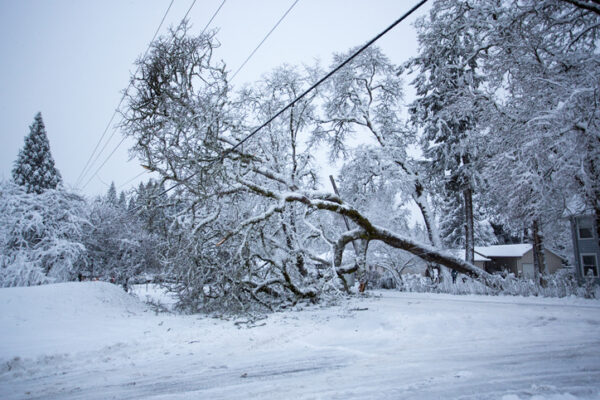I am typing fast to finish before the battery in my laptop dies. Once again, I have not had electricity or heat for days thanks to the latest winter storm.
Whose fault is it? The governor? The Legislature? The Public Utility Commission? ERCOT? The local utility? The Railroad Commission? Republicans? Democrats?
Some say that if power cables were underground, they would not have broken. Why didn’t leaders think of this?
That question kills my rant because I know they have. Many are underground today. Unfortunately, cost and extreme-event resilience of both overhead and underground cables depend on where the installation is and the local risks.
The U.S. Department of Energy spent the past few months developing a research and development program to move the needle toward underground. That may be some help but not a magic fix. Super Storm Sandy, for example, prompted locations in New Jersey to actually elevate parts of the grid.
Texas risks stepping into the classic trap of being generals preparing to win the previous war. In 2021, we had major outages because there was record cold over much of the state for longer than normal. So, we did more winterizing. More northerly states do it routinely and consequently pay more for electricity. In 2023, we had record ice, so we could put more cables underground and probably pay more for electricity.
Outages are caused by extreme heat or cold, fires, floods, tornados, hurricanes or equipment failure due to age or folks with malicious intent. Raising our bills in response to our latest problem is just chasing our tail.
The next step is clear. Texas must develop guidance via independent organizations. This made sense when they were established as they were independent activities. Unfortunately, technology was not smart enough to develop only within the boundaries established decades earlier for those organizations.
The Public Utility Commission of Texas, the Railroad Commission, Texas utilities and cooperatives can maximize the benefit to a new organization. All it takes is working together to jointly assess the risks facing delivery of energy to the people of Texas, agree on an action plan, and repeat annually. We can never be perfect at mitigating future problems, but continuous improvement is much better than today’s approach.
As the line says in the old Mary Chapin Carpenter song, “Sometimes you’re the windshield. Sometimes you’re the bug.” The preparations will occasionally splat against an unanticipated reality. But we could have more reliable energy at lower cost than we have today.
Can it happen? Yes, but it is not likely. It would require strong, clear-headed leadership across a number of organizations to foster collaboration.
The need to avoid excessive enthusiasm for this sort of change was documented by Machiavelli around 1500 when he wrote, “There is nothing more difficult to take in hand, more perilous to conduct, or more uncertain in its success, than to take the lead in the introduction of a new order of things.” In that way, 16th century Italy is much like 21st century Texas.
I cannot fire those responsible for my problems. I cannot change governance to minimize the chance of outages. But it is not Texan to eat what the government gives you, whether it is welfare or regulations. Fortunately, I can fall back on technology.
I can buy a backup generator to power my house when the grid cannot. Even more fun, the backup generator can be my next pickup. There might be a win-win here to justify a new truck to keep the family happy and my laptop going during the next long outage.
Robert Hebner is the director of the Center for Electromechanics at The University of Texas at Austin.
A version of this op-ed appeared in the Austin American-Statesman and Waco Tribune Herald.




